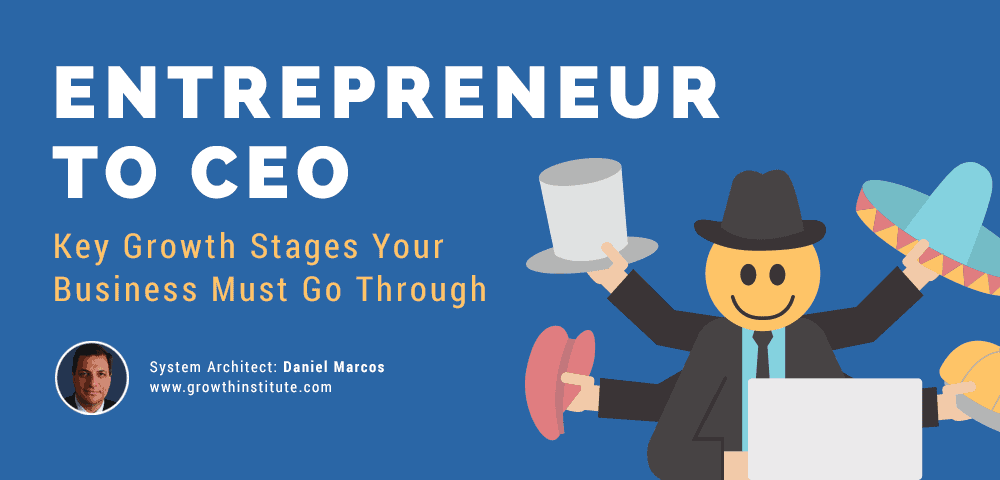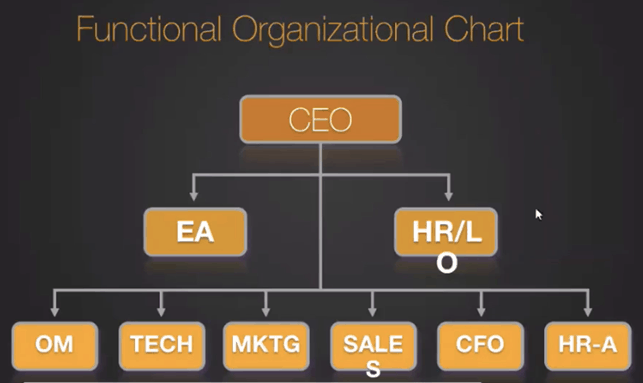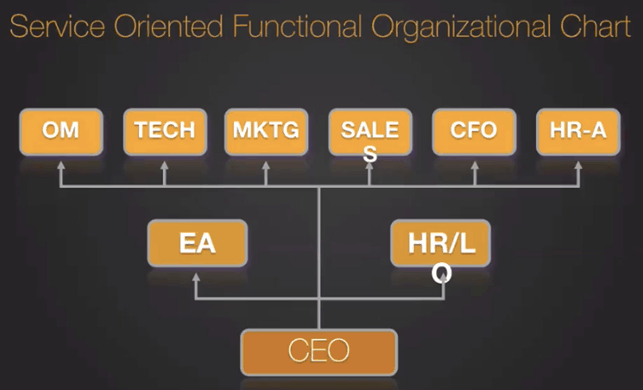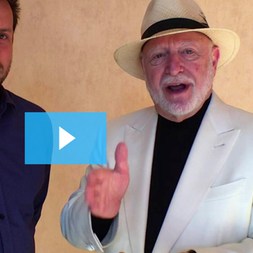
System Architect | Daniel Marcos: growthinstitute.com
As an entrepreneur, you start out with an innovate idea and work blood, sweat and tears to get your startup venture off the ground. Everything is your responsibility, and you most likely wear a lot of hats within the business to ensure that you can meet your goals.
All entrepreneurs have the dream of scaling their venture into a large company and making the move from entrepreneur to CEO. Entrepreneurs work tirelessly on creating products, identifying customers, building a team and sourcing funds, but a CEO effectively manages everyone else in the business. Being CEO is an ultimate sign of success for many, and means that you can become more hands off from the day to day running of the business when you have a reliable team working beneath you.
Growing your business has to be done in the right way, however, and it’s not uncommon for entrepreneurs to fail because they haven’t had the patience or know-how on how to do so. The system below explains the 4 stages of growing your business, with key insights on how to move from one level to the next.
The System of Business Growth Stages
Stage 1: Startup Venture
- Business start-up with 1-5 employees that needs to focus on product development.
- Priority: Nail your value proposition.
-
- Understand what are you selling, at what price point, in what packaging and what marketing to undertake to make your market want to buy your product or service.
- Barrier: Market Dynamics
-
- How is the market running today, who are your competitors, what prices are they selling their product or service for, what are their discounts?
- Ability:
- Have a conversation with your client. Understand what are you selling them and what they want to buy.
- Decision: Strategy
-
- Create and update your business plan.
Stage 2: Growing Small Business
- Small business with 6-15 employees, that needs to focus 100% on sales.
- Priority: Hire the right team.
-
- You cannot be very selective during the first stage, so use this stage to select the right team members.
- Barrier:Leadership
-
- Begin leading a team.
- Learn how to delegate and define direction.
- Ability: Predict, Delegate and Repeat
-
- Create repetitive processes and build your systems.
- Decision:People and Cash
-
- Hire the right people and understand what it is to be a leader.
- Be cash-wise for cash constraints.
Example: Your people see that the company is growing and start asking for a higher salary.
Stage 3: Business Scaling Up
Priority: Scale up.
-
- After you build your team and have your systems in place you begin to scale up.
- Barrier:
-
- Look for systems that will help create great structure in your company.
- Ability: Align and Simplify.
-
- Analyse your systems and make them easier and simpler.
- Align people with just one or two things.
- Decision:
-
- Now that you have your product, your team and your systems, replicate that as fast and as cheaply as possible.
- Functional Organisational Chart.
-
- As a medium sized company, it is important to have that chart in order to give structure to your team.
-
- CEO
- The first level of management:
- EA (executive assistant) – delegate all small fixes so you don’t have to do them.
- HR/LO (HR Leadership & Organization) – that’s HR on a strategic level, that will hire and coach your first line of executives.
-
- As a medium sized company, it is important to have that chart in order to give structure to your team.
- Service Oriented Functional Organizational Chart.
-
- Turn your Functional Organisational Chart upside down.
- Leadership in stage 3: manage and help the people above you to be more productive.
- The people on top of the chart, who are in touch with the client are the most important people in your organisation.
- Identify and remove the bottleneck.
- Evolve to leader of leaders.
Stage 4: Large Business
- Priorities:Continuous growth.
- Ability: Be a strategic innovator and a catalyst of change.
- Evolve from a leader to a satellite gravitating around the company on day-to-day operations and foresee the trends.
- The S-curve of a product lifecycle.
-
- Once you have a client for your product, instead of investing in the same product, invest in another product to up-sell.
- To 10x your company and 10x your team in terms of mentality and training.
- Levels of Management / Training:
-
- Individual contributors.
-
- Frontline employees – train them on:
- Technical know-how (teach them what they do, so they do it better)
- Focus
- Productivity – Results
- Humbleness – Cultural fit.
- Frontline employees – train them on:
-
- Individual contributors.
- First-time leaders:
-
- Foreman, supervisor, superintendents – train them to:
- Be great listeners
- Create performance pattern recognition
- High-performance teams
- Talent development
- Foreman, supervisor, superintendents – train them to:
- Leaders of leaders:
-
- Departmental Managers – train them to:
- Identify the right person for the right position
- How to develop leaders
- Big picture
- Negotiation
- Predictable skills
- Departmental Managers – train them to:
- Leaders of the Organization
-
- C-level Executives, Vice-presidents – train them on:
- People
- Change management
- Global vision
- C-level Executives, Vice-presidents – train them on:
- The 4’C rule; how to get confident.
-
-
- Commitment – Example: Make a commitment: I am going to do THIS by THAT date.
- Courage – The commitment will push you to have the courage to change and learn new systems and procedures
- Capability – Courage will help you build new capabilities.by learning new systems and procedures.
- Confidence – Having these new capabilities will help you have more confidence in execution.
-
It’s important to not get too ahead of yourself when moving from entrepreneur to CEO. Make sure you do the ground work and work through the stages – confirm your value proposition, hire the right team, put your systems in place, and then start to scale up.
Growing your business does take patience, but if you are able to successfully complete all tasks within each stage then you have a much higher chance at succeeding at the next level. And once you do reach CEO status, you can enjoy the shift in responsibilities while continuing to grow the business even more.
System Architect – Daniel Marcos

He is a graduate of EO’s premiere CEO program, the “Birthing of Giants”, and its continuation, “Gathering of The Titans”. He holds a BS in Industrial and Systems Engineering from ITESM (Monterrey Tech) and an MBA (cum laude) from Babson College at Wellesley, MA.















